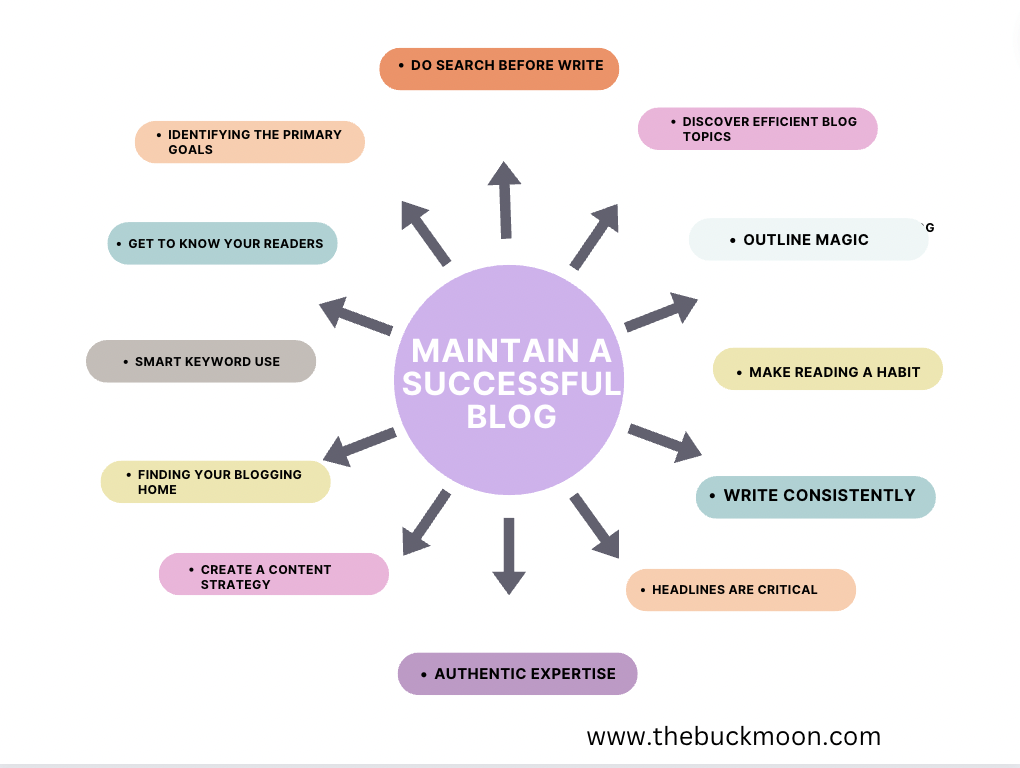In the dynamic realm of business, the bedrock of growth, and sometimes survival, lies in an effective marketing strategy.
It’s not just about slapping on some ads or promotions, but really diving deep into meeting your audience’s needs, pricing your offerings right, and building that brand loyalty which makes customers come back for more.
So, how do you craft this magic potion that sets you apart from the crowd?
In this guide, we’ll spill the beans on how to tailor your message to roll with your audience, set clear goals, and put forth a value proposition so irresistible that customers can’t help but choose you over competitors.
Ready to stand out? Let’s dive in!
What Is Market Analysis?
So, what’s this buzz about “Market Analysis”?
Well, imagine being a detective for a moment. Market analysis is like your magnifying glass, helping you zoom in on the pulse of a particular market or a specific niche within it. By diving deep into this analysis, you unearth some pretty cool insights, such as:
- How big is this playground? Who holds the bigger slice of the market pie?
- What’s the latest in the market? Any roadblocks or challenges on the horizon?
- Who are the people driving this market? What makes them tick?
- Which competitors are ruling the roost? And what secret sauce are they using to stay on top?
- What are the golden opportunities waiting for you? And hey, any pitfalls to watch out for?
In essence, market analysis gives you the blueprint, the map to navigate the ever-changing tides of the business world.
Why Do Businesses Need to Control Market Analysis?
Picture this: embarking on a road trip without a map or, in today’s world, driving into the unknown without a GPS. It’s a bit nerve-wracking, isn’t it?
That’s a bit like diving headfirst into the business world without a grip on market analysis.
You see, with market analysis, you’re not just floating adrift. Instead, you’re tapping into the heartbeat of current market trends, getting a glimpse of the next big thing, or that groundbreaking tech everyone’s talking about.
It’s like having an inside scoop on what your audience is craving and when they might splurge next. Plus, you’re not just playing catch-up.
You’re staying one step ahead, watching competitors, learning their strategies, and even finding those sweet spots in the market they might have overlooked.
And there’s more. Beyond just understanding your competition and demand, market analysis gives you a heads-up on any sneaky curveballs that might come your way.
The best part? All this isn’t just guesswork. It’s a strategy built on hard data, ensuring that every move you make is well-informed, setting you up for success today and in the long run.
1. Understanding the Key Components of Market Analysis
- a. Industry Overview: Think of stepping into a party. You want to quickly gauge how crowded it is, who’s leading the dance floor, and the music’s vibe. This is similar to grasping your industry’s size, its growth trajectory, and spotting the big names. For instance, if you’re entering the smartphone game, you’d be curious about Apple or Samsung’s moves.
- b. Target Market: It’s like choosing a playlist for a group. Are they into jazz or more about pop? In business, it’s figuring out who your customers are and their preferences. Launching a new health drink? Are health-conscious millennials your target or busy professionals?
- c. Competitor Analysis: Ever eyed that burger joint around the corner before opening your sandwich shop? It’s about knowing who’s around, what they’re serving up, and where they might be lacking.
- d. SWOT Analysis: This is your compass. Know what you’re great at, where you could improve, the new paths to explore, and potential roadblocks. For a new bookshop, a vast collection could be a strength, while the rise of e-books might be a threat.
- e. Customer Segmentation: Imagine a bookstore with aisles labelled “thriller lovers,” “sci-fi enthusiasts,” or “romance aficionados.” Instead of a generic approach, businesses categorize their audience to cater to each group’s unique tastes.
- f. Market Trends: This is like spotting which song genre is next to top the charts. Stay in tune with what’s hot and what’s emerging on the horizon.
In essence, market analysis is your toolkit, helping you understand the terrain, the players, and the game’s evolving rules.
2. Setting the Right Business Goals
Alright, diving into the business world without clear goals? That’s like setting sail without a compass. So, how do you zero in on these goals and truly understand what your company is aiming for? Let’s navigate using data-driven approaches. Today’s spotlight: the Critical Success Factors (CSF) analysis.
Unpacking the CSF Framework
CSF analysis isn’t your run-of-the-mill technique. It’s about honing in on those pivotal areas that can make or break your mission. While each business has its unique set of factors, there are a few categories that generally pop up:
- Industry CSFs: Picture the industry you’re in as a bustling city. The latest tech breakthroughs or innovative business strategies? They’re like the skyscrapers shaping the skyline. Take aviation, for instance. Imagine attempting to launch the first supersonic aircraft. The magic ingredient? Design engineers craft revolutionary wing designs. Without their genius, that plane stays grounded.
- Competitive Strategy CSFs: This is all about the chess game – observing your rivals, understanding your unique position on the board, and making your move. Factors like your company’s financial health, your customer base, and how you’re structured internally come into play. Stay tuned; we’ll delve deeper into this in upcoming sections.
- Temporary CSFs: Think of these as passing storms. Maybe it’s a worldwide health crisis or a fresh market opportunity. They’re transient but crucial, nudging businesses to adapt, innovate, or even pivot their strategies.
- Environmental CSFs: Ever considered the bigger picture outside your business walls? Dive into a quick PEST analysis (covering political, economic, social, and technological facets) to discern these factors.
By dissecting these categories, your company doesn’t just set goals; it strategically aligns its efforts, ensuring every step moves towards that bigger vision.
Bonus: More Tools for Goal-setting!
- Business Model Canvas: Imagine a bird’s-eye view of your business. From crucial allies to the nitty-gritty of costs, it’s a one-stop snapshot to refine your business blueprint.
- SMART Goals: Oldie but goldie! Harness this framework to sharpen your objectives, boosting your chances to hit them spot-on.
3. Identifying Market Trends and Growth Rate
Okay, so you’ve nailed down the market size. High five! But don’t pop the champagne just yet. Why?
Because market size is like the tide – it keeps changing. Staying on top of market growth and the trends shaping it? That’s your surfboard to ride these waves.
Unravelling Market Growth Trends
Picture market growth as a bustling market square. Over time, more stalls pop up, and there are more customers buzzing around. This growth is essentially the surge in market size or sales within a niche over some time.
Want to estimate this growth? Dive into indicators like the YoY industry pulse, shifts in customer numbers, and even the average purchases per client (think industry reports).
Now, imagine you’re checking out the Apparel & Fashion scene. Picture this: in May 2022, the market’s worth is a whopping 4.5B.
The value? 2.3B. Yup, in just a year, the market’s size has nearly doubled. Mind-blowing, right?
This growth isn’t just a fun fact; it’s vital intel. Understanding how quick the market’s expanding, its potential, and its overall trajectory (rising star or sinking ship) is key.
Ready for a golden nugget? Let’s talk about a fab tool that transforms raw data into actionable gems: The BCG Matrix.
4: Playing Detective with Your Competitors
To win the game, you gotta know your opponents, right? In business, it’s the same deal. Understanding your competitors isn’t just about knowing who they are, but about diving deep to see where they’re crushing it, and where, maybe, just maybe, they’re dropping the ball. This understanding, my friend, is your secret weapon.
Enter: Porter’s Five Forces Analysis
Think of this analysis as your business magnifying glass. It helps you focus on:
- The competitive heat: How spicy is it out there?
- Supplier sway: Who’s got the power?
- Buyer choices: How easy is it for them to jump ship?
- Are there alternatives?: Could your product be replaced?
- New kids on the block: How easy is it for newcomers to set up shop?
Let’s get our hands dirty and spy a bit on the food delivery world, with DoorDash as our main dish. You ready?
Who’s in the Food Delivery Playground?
By using Market Explorer and Traffic Analytics tools, it’s like we’ve got a front-row seat to the action. From the get-go, DoorDash seems to be the big kahuna, owning 42% of the market!
Domino’s? They’re trailing. Despite being the closest competitor, they own just about half of DoorDash’s share. And Uber Eats, in third place, has only a third of what DoorDash flaunts.
Traffic Tales
Alright, it’s gossip time. If we pull up the Traffic Journey report, some fun patterns emerge. DoorDash?
They’re the boss when it comes to direct traffic. Domino’s is next up. But hold the phone when it comes to referral traffic, Uber Eats rides ahead.
In fact, they had 700k more site visits in August 2022 than DoorDash.
Seems like they’ve got a snazzy referral strategy.
But wait, there’s more! Digging further into Traffic Journey Details, we discover the gold: which websites are sending traffic to these delivery giants.
For instance, big names like LA Times or Starbucks seem to be buddies with Uber Eats. Interesting, right?
This sleuthing is just a taste of what you can uncover with Porter’s Five Forces Model. The tools?
They’re your trusty magnifying glass and notebook, ready to jot down all the juicy details that could help you ace your game.
5: Nailing Down Your Perfect Customer
You ever been to a party where you just couldn’t find someone to vibe with? That’s because not everyone’s your type. And when it comes to business, this idea is gold. It’s not just about getting to know your customers; it’s about really knowing them – their quirks, habits, likes, and dislikes.
Buyer What Now?
Enter the world of ‘buyer personas’. Think of them as made-up characters that could be pulled from a story, but each represents a specific group of your customers. Crafting these characters helps you understand their needs, dreams, and challenges.
If you ever played with paper dolls, imagine giving each a backstory: Where are they from? What music gets them dancing? What keeps them up at night? That’s your buyer persona.
Segmenting – It’s All About Finding the Right Box
Now, imagine having a wardrobe full of outfits but not knowing when or where to wear them. That’s where segmentation comes in. By dividing your customers into specific groups or “segments”, you can match your products and services to their needs. It’s like tailoring an outfit for each occasion.
Some popular ways to segment:
- Geographic: Are they city folk or country lovers?
- Demographic: How old are they? What’s their family like?
- Psychographic: Do they love hiking or are they all about Netflix and chill?
- Behavioral: Are they loyal to brands or always hunting for deals?
- Media: Instagram or more of a newspaper person?
- Benefit: Do they chase quality or rave about stellar customer service?
Let’s Play a Game of Match-up with Hooley’s Framework
Once you’ve got your segments, it’s time to decide which ones to focus on. The game is simple: match your customer segments with your company’s strengths. It’s like pairing wine with cheese; some combinations just taste better.
This gameboard (or framework, if we’re being technical) has two lines: one shows the appeal of each segment and the other, your company’s strength in that area. It’s a great way to spot where you could hit a home run!
Getting Down and Digital
Thankfully, there are nifty tools out there like Market Explorer and Traffic Analytics that can offer a goldmine of insights about your audience. Whether you’re curious about their age, favorite media, or even hobbies, these tools got you covered.
Bottom line? The more you know about your audience, the better you can serve, woo, and win them over.
In Conclusion
Understanding the market is the cornerstone of business growth. Without it, even the most promising ideas may falter.
Ensure your strategies are rooted in thorough market research, lest you fall into pitfalls like the Detroit Three automakers.
Their oversight cost them dearly, underscoring the importance of comprehensive scenario planning in market research.
Interdum et malesuada fames ac ante ipsum primis in faucibus. Quisque tristique pharetra finibus. Proin scelerisque turpis non enim ullamcorper maximus.
Avoid These 10 Common Digital Marketing Mistakes and Learn How to Fix Them
Previous PostThe Ultimate Guide to Marketing Strategies & How to Improve Your Digital Presence
Next PostTable of Content
Achieve scalable digital growth that your business deserves
Connect with us to discuss how we can help you achieve your core marketing KPIs quarter after quarter and drive successful results for your business. Our team is dedicated to creating a budget-friendly, effective inbound growth marketing system that is designed to help your business succeed.
Talk to usWe're in business to help you thrive digitally with SMART marketing. It’s time for growth. Are you ready?
Lets talkUnleash the full potential of your business with our result-driven inbound growth marketing services.
As your AI-powered and emotionally intelligent team, we take care of all your online marketing needs, so you can focus on running your business and reaching your goals, faster.






